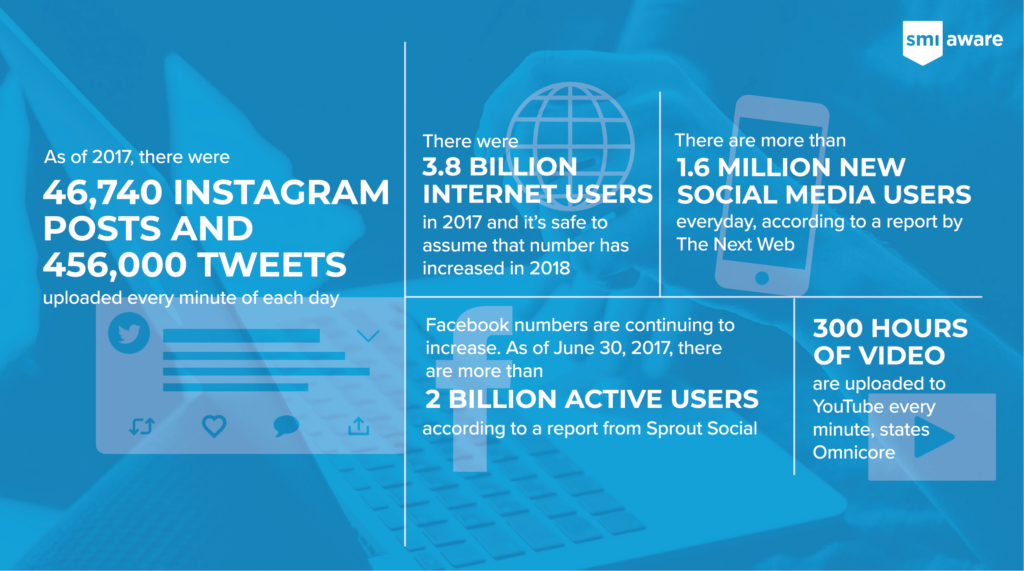Litigation involving electronic evidence is growing fast—especially when it comes to social media content. What was once rare is now routine: requests for social media evidence are a common part of the discovery process.
If you’re handling a case with social media evidence, it’s critical to understand how discovery works—and why it matters.
Let’s put the scope of the challenge into perspective:
By the numbers:
-
3.8 billion internet users (2017)—and counting
-
1.6 million new social media users every day (The Next Web)
-
46,740 Instagram posts + 456,000 tweets every minute (Domo)
-
300 hours of video uploaded to YouTube every minute (Omnicore)
-
2+ billion daily active Facebook users (Sprout Social)
That’s a flood of data. And with so many people sharing intimate details of their lives online, social media evidence can be both critical and elusive.
The challenge? Finding relevant, defensible evidence before it disappears. That’s where expert analysts come in.
The social media discovery process
At SMI Aware, our analysts follow a proven process to collect, authenticate, and preserve social media evidence:
-
Early collection is key
Engaging our team early reduces the risk of evidence loss. Once a post is deleted—or privacy settings are changed—it’s gone for good. And screenshots alone won’t make evidence admissible.
Opposing counsel may advise a client to delete content. By starting discovery promptly and using periodic monitoring, you safeguard your case.
-
Data is collected and authenticated
We collect content directly from platforms, with metadata intact to verify date, time, and source. Even if a post is later deleted, open-source reports retain source code showing when the content was created.
All data is stored securely, ensuring a clear chain of custody and defensibility.
-
We search beyond the obvious
Our analysts don’t stop at public profiles. We search:
– All known accounts and connections
– Tagged photos, comments, and status updates
– Deep web sources
– Mobile-native appsNiche online communities
– Search-engine-indexed content
If it’s online, we’ll find it.
-
Evidence is preserved and organized
Evidence is exported into a searchable PDF archive, making it easy to locate what you need, when you need it. Every piece is authenticated and defensible—ready for court. -
Expert testimony available
If needed, our analysts can provide affidavits or testify to the collection process, strengthening your case’s evidentiary foundation.
Don’t wait until it’s too late
In today’s digital world, it’s no longer a question of if social media evidence will play a role—it’s a question of when.
Without proactive discovery, critical evidence could slip away unnoticed or uncollected.
- Engage experts early.
- Preserve evidence defensibly.
- Build a stronger case.




